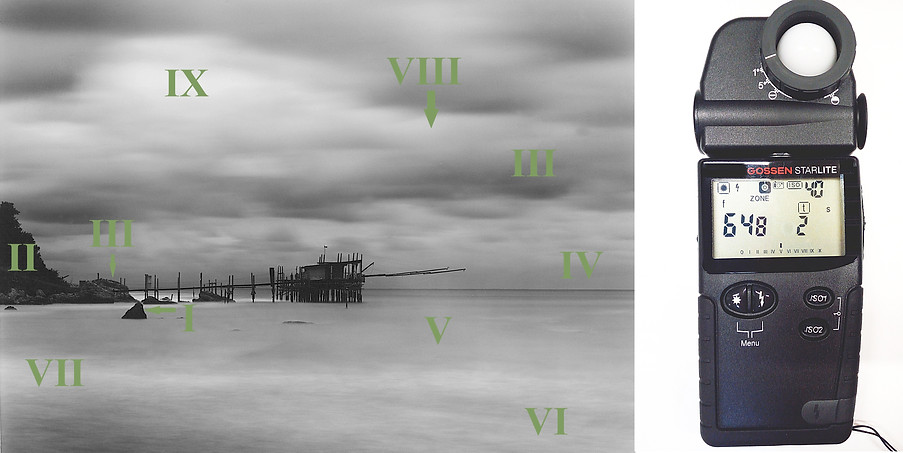Antonio Biagiotti
Traditional Film Photography

Photographic course

Exhibit and develop with the Zonal System

The pivot on which the Zonal System is built and rotates is the concept of visualization.
That is, through the full understanding of the method, we will have the possibility of interpreting the subject by modifying its tonal scale.
With this course you will learn how to expose and develop the film according to the criteria of the Zonal System. This technique was developed in 1939 by the photographer and teacher Ansel Adams, at the Art Center School in Los Angeles, with the contribution of another great instructor, Fred Archer.
In the following years the Zonal System was subjected to the verification of the practice of photographic teaching, undergoing various modifications, developments and variations.
Today it is common practice to use it with a scale of Zones and values ranging from Zone 0 to Zone X (Zones are marked with Roman numerals) ._ cc781905-5cde-3194-bb3b-136bad5cf58d_
In this scale, Zone 0 and Zone X represent respectively the deepest black and the maximum white that can be obtained on the printout.

Zone V represents the geometric midpoint (medium gray), Zone I and Zone IX represent the first tonal variation distinguishable from the extremes (dynamic range), finally there is the part that goes from Zone II to Zone VIII (superficial range ), and it is in these seven Zones (or seven stops) that it is possible to enclose the detail of our subject.
The full understanding of this operating method, allows to determine the exposure and the optimal development procedure, to return in print the entire tonal range (if we wish) of the subject we are photographing.

Kodak T-Max 400 Film - Development N-1
In this example you can see the range of luminances
of the subject and the spot meter you use for
read them. Learning to see how the film "sees"
we will be able to pass on the right information to you.

We will learn to read the contrast of the subject to see how the film “sees”, the key to a satisfactory application of the visualization is to get the right information to the negative.
We will know the numerous possibilities offered by the various development methods, we will understand that the exposure of the film and its treatment must be considered as a whole, although they are carried out at different times.

Many photography enthusiasts (but also professionals) do not have a proven method for exhibiting and developing their films. Often they try to base themselves on the experience that they gradually accumulate with the “trial and error” method, or they delegate their hopes to some coupled revealing film, which some friends or the “network” have promised to be miraculous!
It goes without saying that this empirical way of proceeding is often burdened by failure, moreover the scarcity or alternation in the results, generates confusion and frustration.
The truth is that there is no film, a detector or some other material capable of providing excellent results in all shooting conditions, furthermore, by entrusting one's results to chance or materials, we give up the most intimate and satisfying part, the creative one!
The Zonal System is a powerful tool, which allows us to free up the visualization, allowing us to translate in print the range of luminances of the subject as well as we we want them to be under form of gray values.

Kodak T-Max 100 Film - N + 2 Development
In order to implement and transmit as many concepts as possible, the course will take place with 1 or maximum 2 participants.
If desired, the course can also be held on weekends.

Ilford HP5 Plus Film - N + 1 Development
PROGRAM
Part I.
Introduction to the Zonal System (4 hour lesson).
- What it is and what it allows
- The Zones and the Visualization Concept
- Expose for the shadows and develop for the highlights
- We expose and develop a film (normal development)
Part II
Films and ISO sensitivity, extension and contraction of development (4 hour lesson).
- Films, nominal sensitivity and effective sensitivity
- Differentiated developments N + 1 N + 2 / N-1 N-2
- The visualization flies but there are limits
- The same subject, many ways of interpreting it (now we can)
Costs
Complete course
The course lasts 8 hours and includes film and chemicals . Euro 180
Course Part I
Introduction to the Zonal System (4 hour lesson). Euro 100
Course Part II
Films and ISO sensitivity, extension and contraction of development (4 hour lesson). Euro 100
The course will take place at the new Camera Obscura in Pistoia
